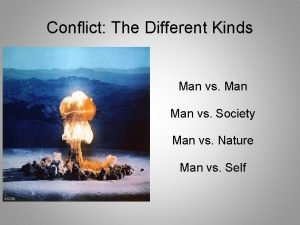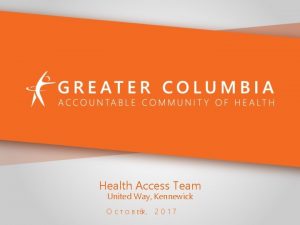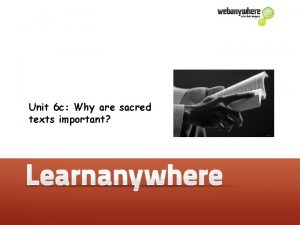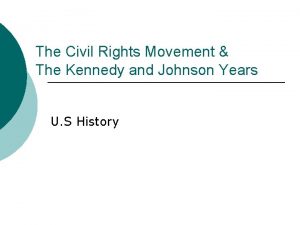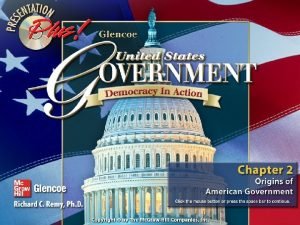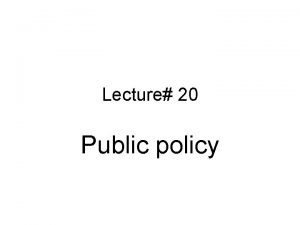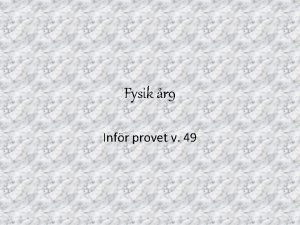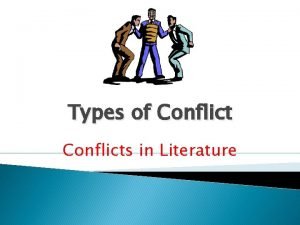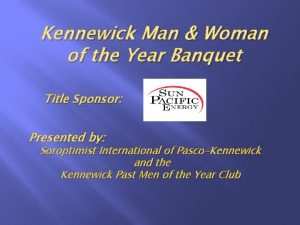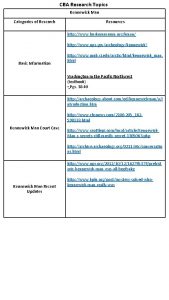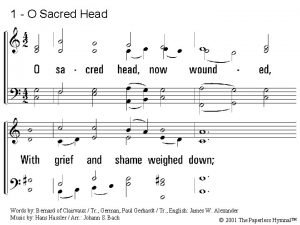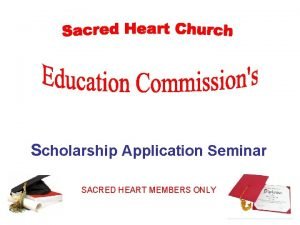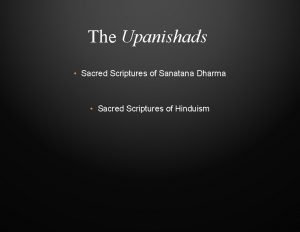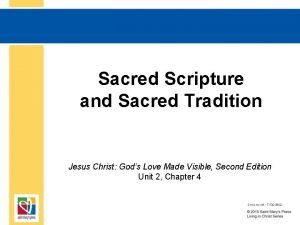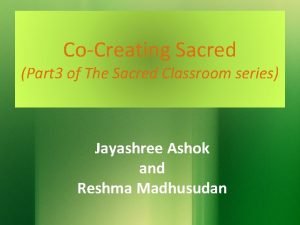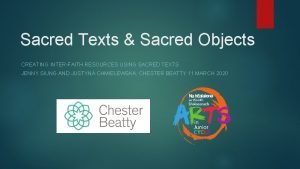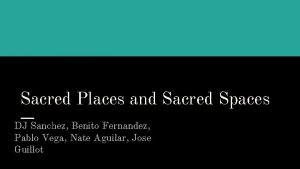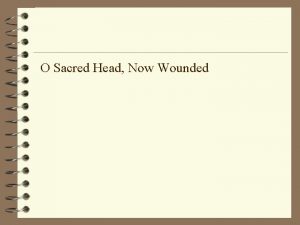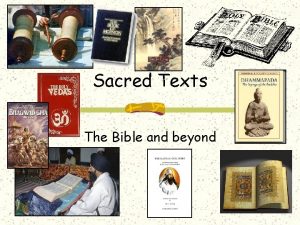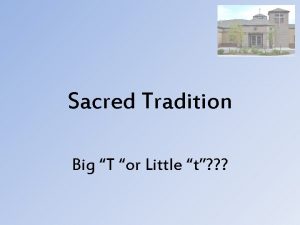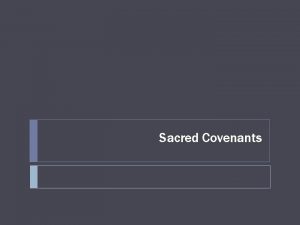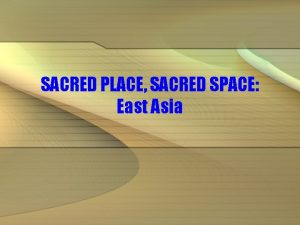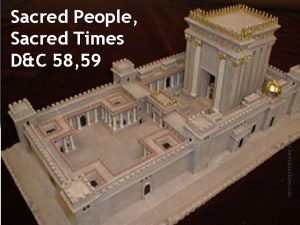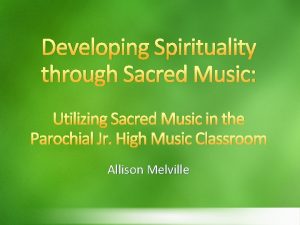Kennewick Man Science vs Sacred Rights Why Should

























- Slides: 25

Kennewick Man: Science vs. Sacred Rights (Why Should we Care? ) • A recent flood washed your grandmother's casket into a riverbed. Since her remains have been disturbed anyway, local scientists want to study them. Should they be allowed to? Why or why not? • What about your great-grandmother? What about your great-great-grandmother? (etc. ) • What if studying her remains could benefit mankind?

Who is Kennewick Man? • Kennewick Man’s remains were found by some college students in 1996 • Since the remains were found in a watershed, they fell under the control of the Army Corps of Engineers. • A preliminary examination suggested caucasoid features initially labeling the remains as those belonging to a white settler • The clovis point in his hip and subsequent dating put the remains at approximately 9, 000 years old • Because the remains were found in ancestral tribal land, the Umatilla claimed the remains under NAGPRA • Scientists filed a law suit, requesting that the remains not be given to the Umatilla tribe, so science could study them.

Caucasian Skull Asian Skull Kennewick Man Skull • How is Kennewick Man’s skull similar to the Caucasian skull? • How does Kennewick Man’s skull differ from the Asian skull?

Kennewick Man isn’t Asian nor Native American… Asian Male Skull Native American Skull Kennewick Man Skull Then, how did he get here? ? ?

This is the current model of human migration The letters correspond to where people from each group came from and went to. The colors represent thousands of years before present. The dotted lines represent presumed migrations, as the routes are now underwater.

How do we know ethnicities? Mitochondrial DNA: DNA from part of a cell that is used to study differences over extended periods of time

How do we know dates? • Carbon dating: – Carbon 14 is present in all organic material and is absorbed (eaten) by all living creatures – Carbon 14 decays into Nitrogen 14 – The ratio of Carbon 14 to Nitrogen 14 determines how long ago something stopped ingesting carbon, how long ago something died

Artifacts can also point to cultural relationships: These are Clovis Points (named for Clovis, NM). They represent a specific stone age technology and specific indigenous cultures during a specific time, 13, 000 -9, 000 years ago. A clovis point was found in Kennewick Man’s hip


SCIENCE and THE FIRST AMERICANS Archeologists’ Point of View-Studying the Past is Essential: We all share the past -- no one owns it. Science should be conducted to uncover the truth for all people for all time. www. friendsofpast. org

WHY Should We Care? §Archeology is especially important and useful in helping us to understand people and events about which little or nothing has been written §The past will be lost unless we defend our right to learn about the heritage of all Americans. §This evidence must be preserved, and scientists must be allowed to study it, if we hope to identify and understand the lives of the earliest Americans. §Science offers the process to test hypotheses using factual evidence. §We must keep our country free for exploring and expressing all views and explanations of our past. §We must insist that good scientific methods be practiced, free of political motives.


CREATING NEW TECHNOLOGIES In previous centuries archeologists were content simply to find objects. Today, armed with computers, laboratory analysis, theories about society and culture, and a wide range of questions about human development and migration, scientists now have the tools to shed light on the origins of the First Americans. In other words - We have the tools and the technology, why not use them?

"The business of trying to find out who is related to who is something that we : should be aware of. ” C. Loring Brace, is a professor of anthropology at the University of Michigan who believes Kennewick Man may have been a descendant of the ancient Jomon people of Asia. WHAT THE SCIENTISTS SAY ABOUT THE IMPORTANCE OF THE KENNEWICK MAN “Only through scientific study of important discoveries such as Kennewick Man can objective knowledge of America's rich and diverse past be developed and fully appreciated by all communities who have a stake in the past. ” Dr. Bonnichsen professor of anthropology at OSU "He [The Kennewick Man] is going to continue to reshape our thoughts about how the world was populated. " Doug Owsley is forensic anthropologist for the National Museum of Natural History at the Smithsonian Institution in Washington, D. C.


Sacred rights: The Confederated Tribes of the Umatilla

The Confederated Tribes of the Umatilla • Made up of The Umatilla, Yakama, Nez Perce, Colville, and Wanapum. • All five tribes have potential ties to Kennewick Man— these tribes share similar religion, traditions, and oral histories going back over 10, 000 years; as such, any remains are ancestral. They call this ancestor the Ancient One. • Their people have been part of this land since the beginning of time. • Do not believe that their people migrated to this continent (as scientists do).

Argument for Reburial “Scientists have dug up and studied Native Americans for decades. We view this practice as desecration of the body and a violation of our most deeply-held religious beliefs. ” -Armand Minthorn • Confederated tribes agree that the Ancient One should be reburied as soon as possible. • Once a body goes into the ground it is meant to stay there until the end of time. • Leaving the Ancient One unburied is desecrating this ancestor.


The Law • The Ancient One is protected under the Native American Graves Protection and Repatriation Act (NAGPRA, 1990). • NAGPRA protects Native American burials and cultural resources from destruction. • NAGPRA requires return of human remains and artifacts that scientists have been desecrating for years.

The Law (Continued) • Under NAGPRA Native American tribes have the right to file a claim to have remains reburied. • Confederated Tribes filed a claim based on belief that the Ancient One is their ancestor.


Summary of Native American perspective on Sacred Rights • Confederated Tribes have lived in North America since the beginning of time—any human remains found are ancestors regardless of appearance. • They are trying to do what is right — rebury remains that deserve the respect and honor of burial. • Science should never take precedence over religious rights and beliefs of American citizens. • Tribes expect the Federal Government to uphold NAGPRA and return the Ancient One.

Questions to Think About Scientists argue that there is "wide popular interest" in studying the Kennewick Man so consider: Is there a public "right to know" that outweighs considerations of respect for the dead? Should the majority rule in questions of religious rights? Who is the majority? To what extent, from a Native American point of view, might this line of argument be understood as a variation on "might makes right"?

Who is the Kennewick Man? The latest findings • Not European/Caucasian • Not related to current tribes in area • Most closely resembles the Polynesian or Jomon people who are a "south Asian" population but this is not conclusive. Skulls older than 8, 000 years old have greater physical diversity than do those of modern Native Americans. This range implies that there was a genetic shift in populations about 8, 000 years ago. This has been used to justify theory that migration happened in waves over many years from many places, unlike the Landbridge theory. http: //www. nps. gov/archeology/kennewick/index. htm
 Man v society examples
Man v society examples Gtg kennewick
Gtg kennewick Andreas carlsson bye bye bye
Andreas carlsson bye bye bye Negative rights vs positive rights
Negative rights vs positive rights Litoral rights
Litoral rights Conclusion of rights
Conclusion of rights Legal rights and moral rights
Legal rights and moral rights What are negative rights
What are negative rights Negative right
Negative right Positive vs negative rights
Positive vs negative rights Negative right
Negative right My favourite subject is music
My favourite subject is music Why environmental science is an interdisciplinary science
Why environmental science is an interdisciplinary science Why are sacred texts important
Why are sacred texts important Don't ask why why why
Don't ask why why why Why did the struggle for equal rights intensify
Why did the struggle for equal rights intensify Why did the anti-federalists insist on a bill of rights?
Why did the anti-federalists insist on a bill of rights? Public policy definition
Public policy definition Through one man
Through one man You live to learn
You live to learn Vatten tryck
Vatten tryck A hungry man is an angry man meaning and sentence
A hungry man is an angry man meaning and sentence Old man and new man
Old man and new man Forbrenner man mer når man har mensen
Forbrenner man mer når man har mensen Man vs man in the cask of amontillado
Man vs man in the cask of amontillado External conflict definition in literature
External conflict definition in literature
